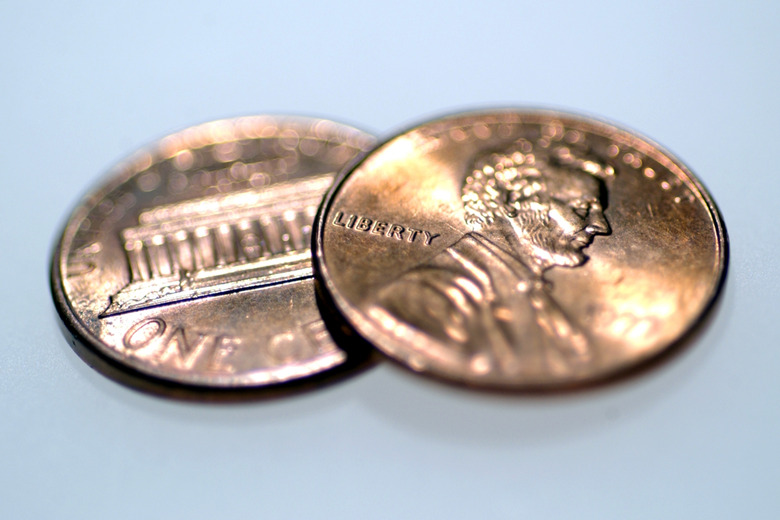Penny Cleaning Experiments For A Fifth-Grade Science Fair
Penny cleaning experiments are inexpensive science fair projects that allow you to test chemical reactions. You can use a few simple home ingredients to test the effects of acid as a cleaning agent. You can safely perform each of these experiments in your own kitchen or a classroom lab.
Fruit Juice
Fruit Juice
Fruit juices have a naturally acidic base, but the acid levels are different in each fruit. You can test the ability of each juice to clean older penalties, thereby testing the different effects of varying acid levels. Gather four or five different juices, such as:
- pineapple juice
- apple juice
- orange juice
- lemon juice
- grapefruit juice
Make sure to use 100 percent juice to avoid including any unintended agents, such as sweeteners or artificial colorings, in your test. If you are unable to find the juice you need, you can squeeze it yourself to make sure that you are using natural juice. Place each juice in a different, clear glass. Place a few pennies in each glass and let them sit for five minutes. Remove them from the mixture and dry them with a paper towel. You can expect some of the pennies to be more shiny than others, showing you the different effects of the different juices.
Soda Cleaner
Soda Cleaner
Soda contains acids, much in the same way as fruit juice, but it adds the carbonization effect of carbonized water. You can test the effect of this on pennies. Collect four or five clear sodas, such as 7-Up and ginger ale. Test each by pouring the sodas into different, clear glasses. Then drop a few old coins into each glass. Try to use coins with approximately the same amount of stain. Leave the pennies in the soda for five minutes, remove the coins and dry them with a clean paper towel. Compare the effects of each soda on the pennies.
Vinegar and Baking Soda
Vinegar and Baking Soda
Combine 1 cup of vinegar and 2 teaspoons of baking soda to create a small chemical reaction. The reaction is minor, creating a fizzing noise and some splashing. Use three clear glasses for this experiment, half filling each with vinegar. Mark the first glass "vinegar only," the second "during reaction" and the third "after reaction." Place a few old pennies in two of them. Place 2 tablespoons of baking soda in the second and third glasses, which have no pennies inside yet. After the reaction, place pennies in the third glass. Inspect each group of pennies after five minutes to determine which is the best cleaner. You can expect the pennies from the reaction to be brighter than the pennies in vinegar alone or the ones placed in the mixture after the reaction.
Clean With Metal
Clean With Metal
Pour vinegar into two clear bowls and mix 1 teaspoon of salt into each bowl. Place two clean screws in one of the bowls and lean another screw against the side of the bowl, half submerging it in the mixture. Drop a few pennies into each bowl and leave them for five minutes, removing them and drying them with a paper towel afterward. Inspect the differences between the pennies. Also note any changes in the screws, specifically on the one that was only half-submerged. You can expect the grime from the pennies to transfer to the screws, darkening the screws and cleaning your pennies.
References
Cite This Article
MLA
Hammond, Kristyn. "Penny Cleaning Experiments For A Fifth-Grade Science Fair" sciencing.com, https://www.sciencing.com/penny-cleaning-experiments-fifthgrade-science-fair-10036748/. 24 April 2017.
APA
Hammond, Kristyn. (2017, April 24). Penny Cleaning Experiments For A Fifth-Grade Science Fair. sciencing.com. Retrieved from https://www.sciencing.com/penny-cleaning-experiments-fifthgrade-science-fair-10036748/
Chicago
Hammond, Kristyn. Penny Cleaning Experiments For A Fifth-Grade Science Fair last modified August 30, 2022. https://www.sciencing.com/penny-cleaning-experiments-fifthgrade-science-fair-10036748/
